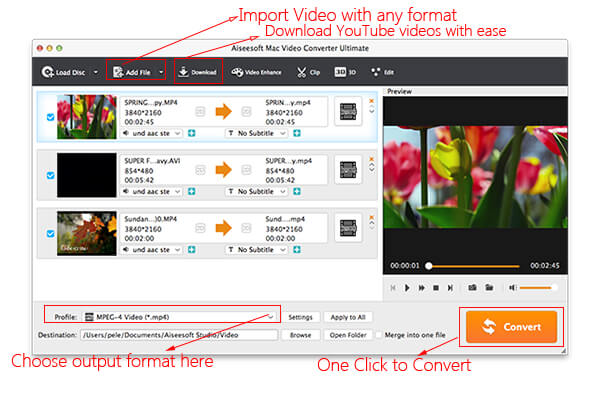(Beginning with PowerPoint for Microsoft 365 for Mac version 16.19, audio narration is included in the video when you export your presentation.) Click File Export. On the File Format menu, select the video format that you want (MP4 or MOV). Select the video quality you want. Format Factory is a free, fully-featured multimedia converter that lets you convert audio, video, and even images, between the most popular formats. It runs in all Windows OS, including the latest Windows 8. Also want a Format Factory for your Mac (Yosemite & Mavericks included)? Wondershare UniConverter (originally Wondershare Video Converter Ultimate) As the best MP4 converter Mac on CNET download site, it has impressive file compatibility for over 1000 video/audio formats and popular device compatible formats, such as MP4, MOV, MKV, iPhone, Samsung, TV, Xbox, etc. Wondershare MP4 converter Mac not only converts MP4 to MOV Moreover, the industry-leading. There are a number of 3rd party tools for Mac that can convert your.wmv or.wma file to one of the supported formats listed above. Alternatively, if you have a Microsoft 365 subscription that includes Microsoft Stream you can upload the.wmv or.wma file to Stream and insert it.

Leawo Video Converter for Mac is a versatile Mac media converter program to help you solve format-unrecognizable issues, thus to expand movie enjoying experience to more devices and players. As professional Mac video converter, Leawo Video Converter for Mac could convert video and audio with lossless quality like MKV to MP4, MKV to AVI, AVI to.
About MXF files


MXF is an industry standard file format for video and audio. Similar to QuickTime files, MXF files contain information about the media in the MXF file. This information, called metadata, can include frame rate, frame size, creation date, and custom data created by a camera operator, assistant, or archivist.
MXF files come from a wide range of sources. They can be created by cameras like Sony (OP1a) and Panasonic (OP-Atom, OP1b), editing systems like Avid Media Composer, or other video recording devices.
With Pro Video Formats, Final Cut Pro can read MXF metadata and preserve it during editing. You can also include MXF metadata when exporting a video file in the OP1a format. In addition, Compressor can take an existing video or audio file and transform it into an MXF file for digital delivery.
Install Pro Video Formats
If you've installed Final Cut Pro X, Motion or Compressor on your Mac, install Pro Video Formats using Software Update in System Preferences. Pro Video Formats installs these items:
Video Format For Mac And Pc
- MXF Reader for importing
- MXF Export including AVC-Intra
- Compressor settings for exporting MXF files
- AES3 Audio Codec
Format Video For Mac Free Download
After installing, you can create more custom share settings for MXF export using Compressor.
Export XML files with custom MXF metadata
Best Format For Video Files
Exporting an XML file from Final Cut Pro is the best way to exchange metadata from your clips and projects with third-party applications for finishing, broadcasting, or archiving into a media database. To export custom MXF metadata in an XML file, you'll need to first create a custom metadata view.
- Select a clip in the Browser.
- Choose Window > Show in Workspace > Inspector (or press Command-4), then click the Info Inspector button .
- Select the Metadata Views pop-up menu at the bottom of the Info Inspector, then choose Edit Metadata View.
- Select the properties that you'd like to add to your custom MXF metadata view, including MXF metadata properties. Click OK.
- Click the gear icon , choose Save Metadata View As, enter a name, then click OK. This custom metadata is added to the Metadata View menu in the Inspector, and to the the Metadata View pop-up menu in the Export XML window.
- Select the item you're exporting in the Browser, then choose File > Export XML.
- Select your custom MXF metadata view from the Metadata View pop-up menu, choose the XML version you want to save, choose a location and a name for the file, then click Save.
